
CSC 250
Theory of Computation
Smith Computer Science

Theory of Computation
Smith Computer Science
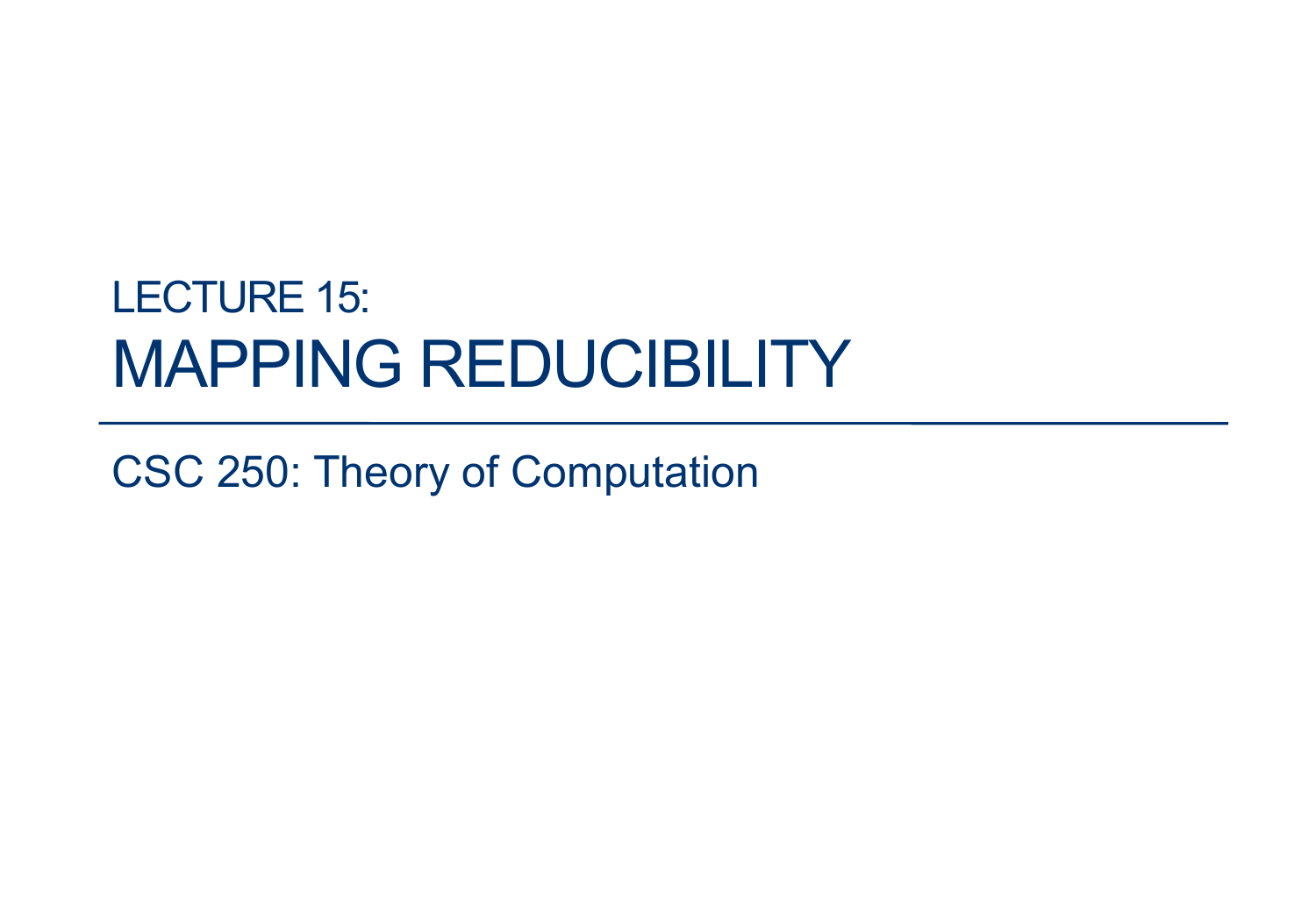
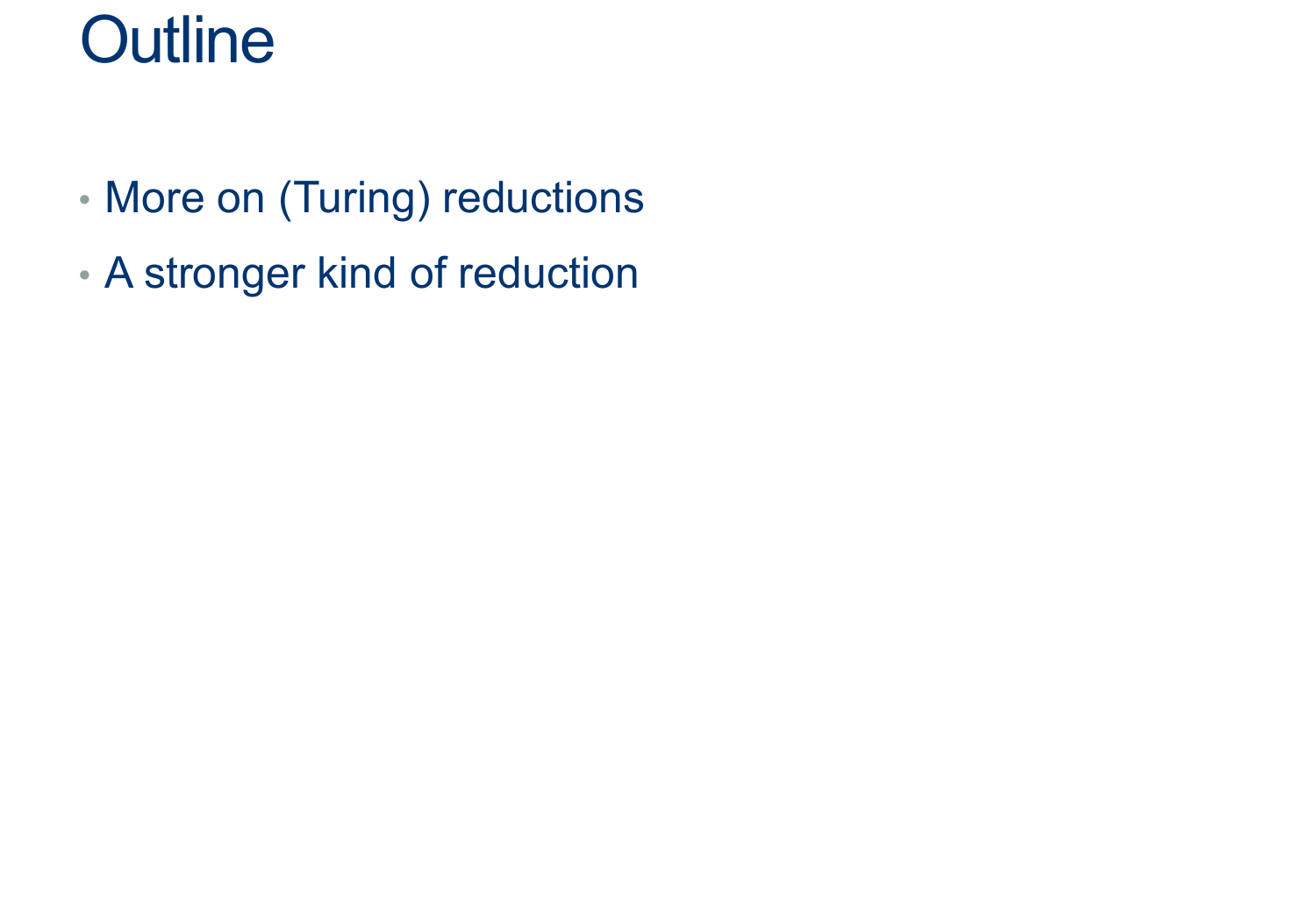
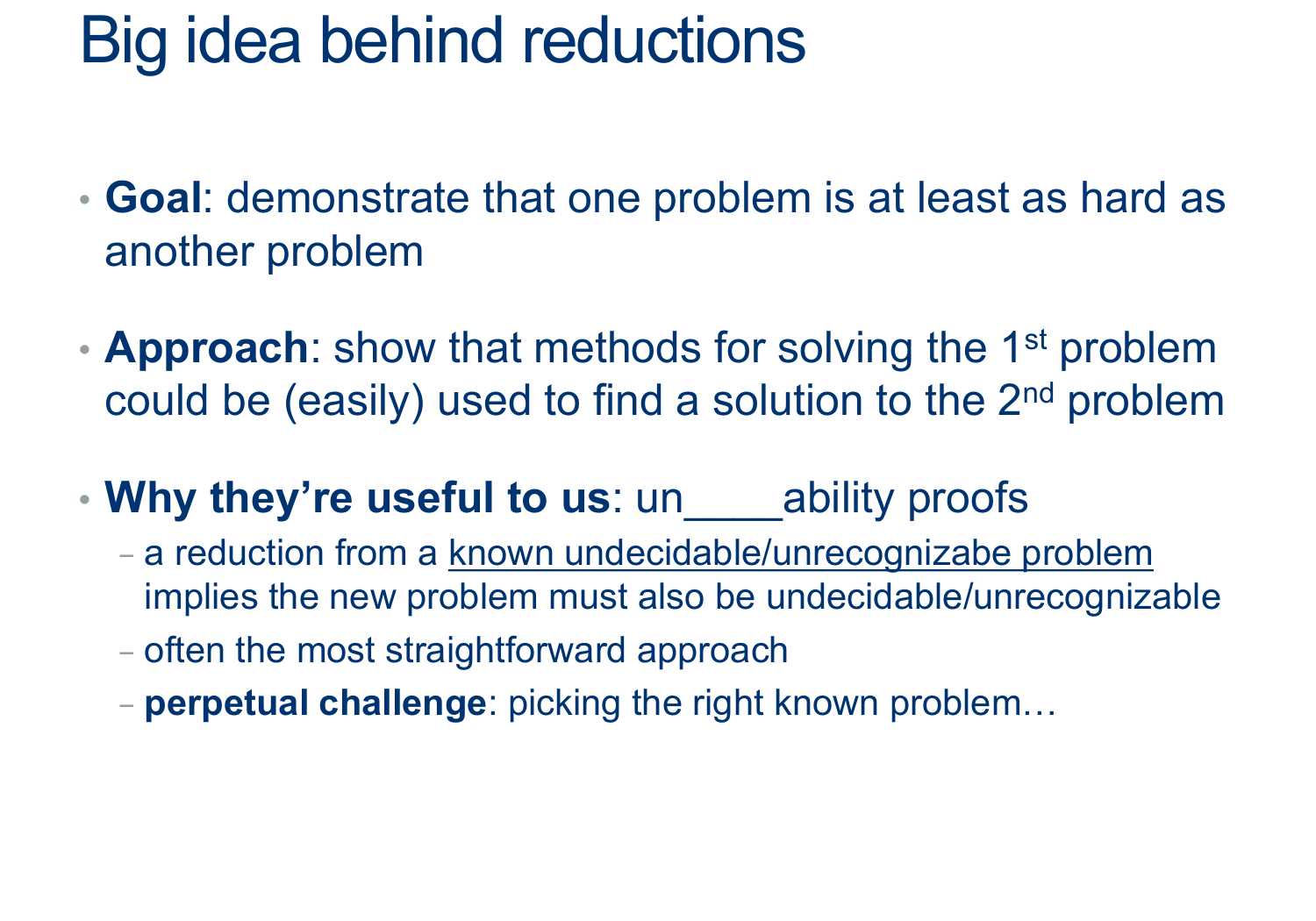
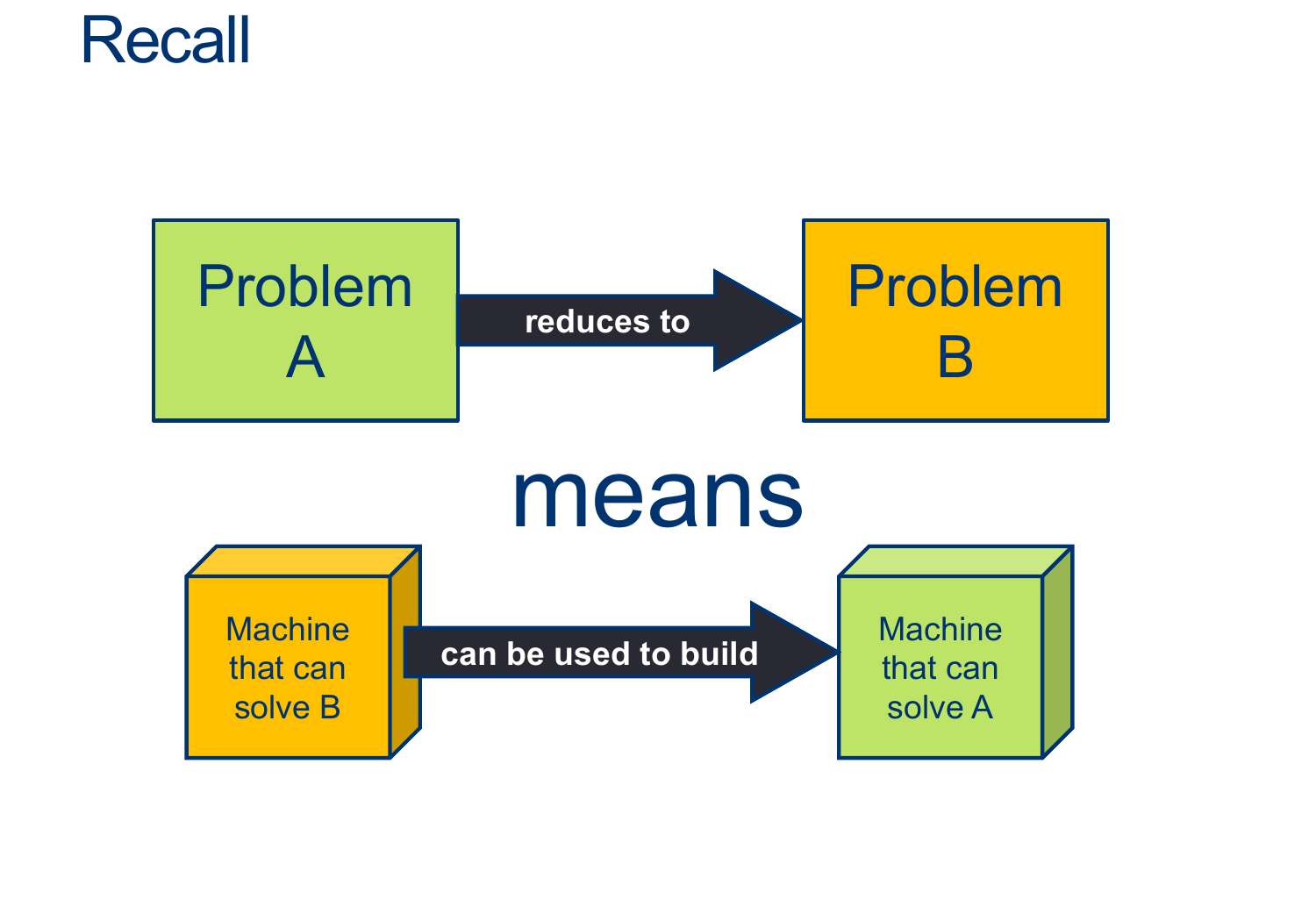
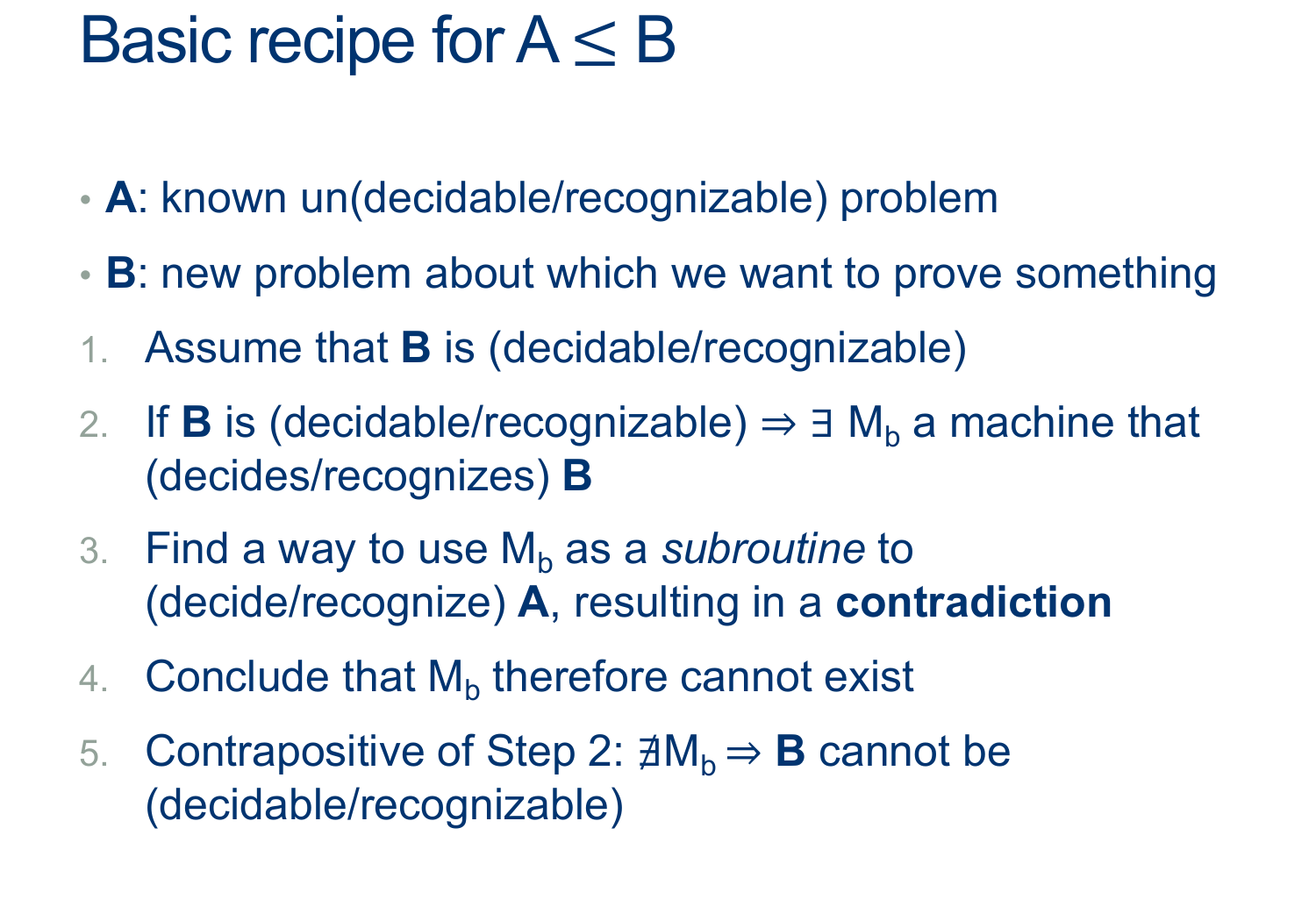
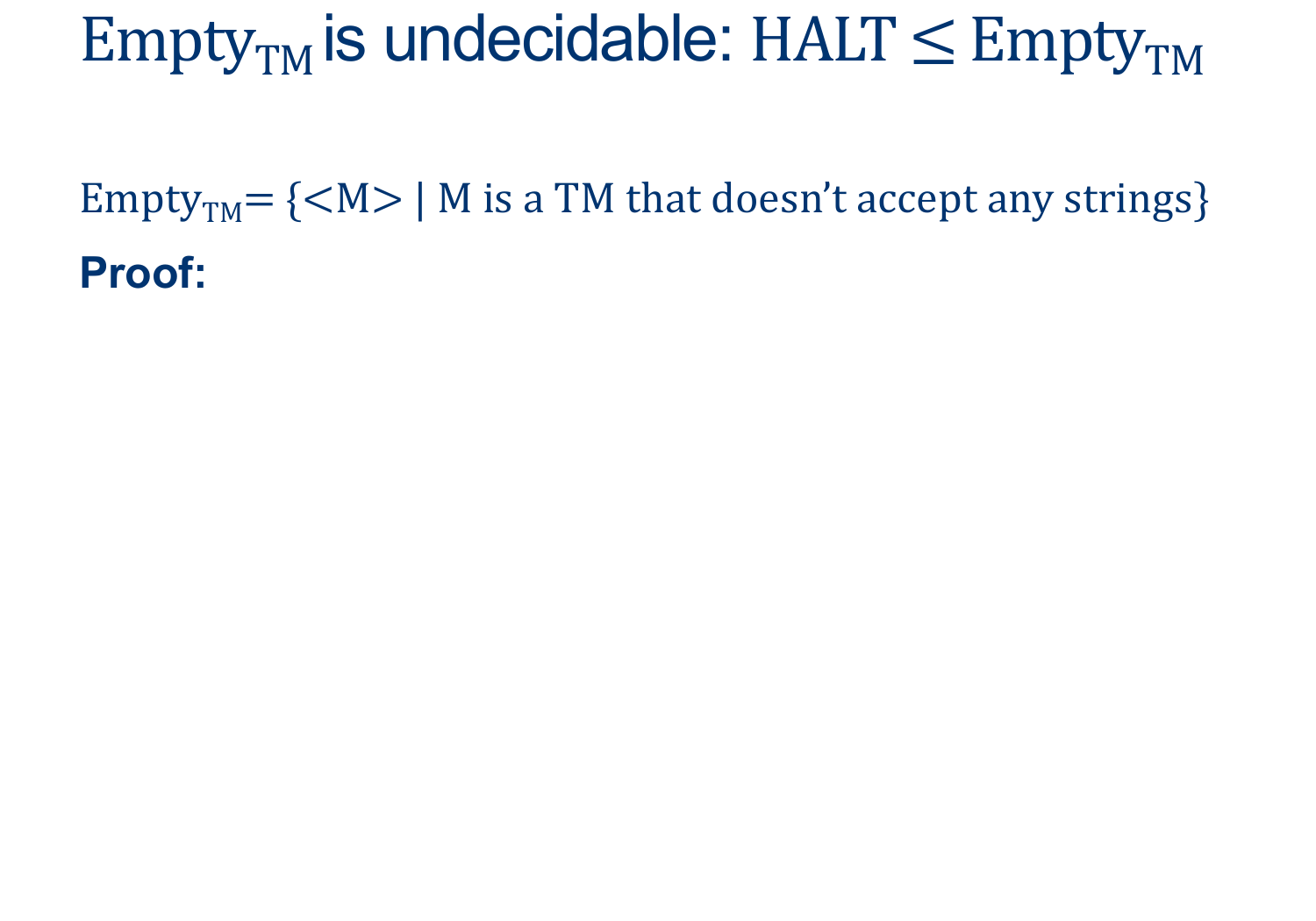
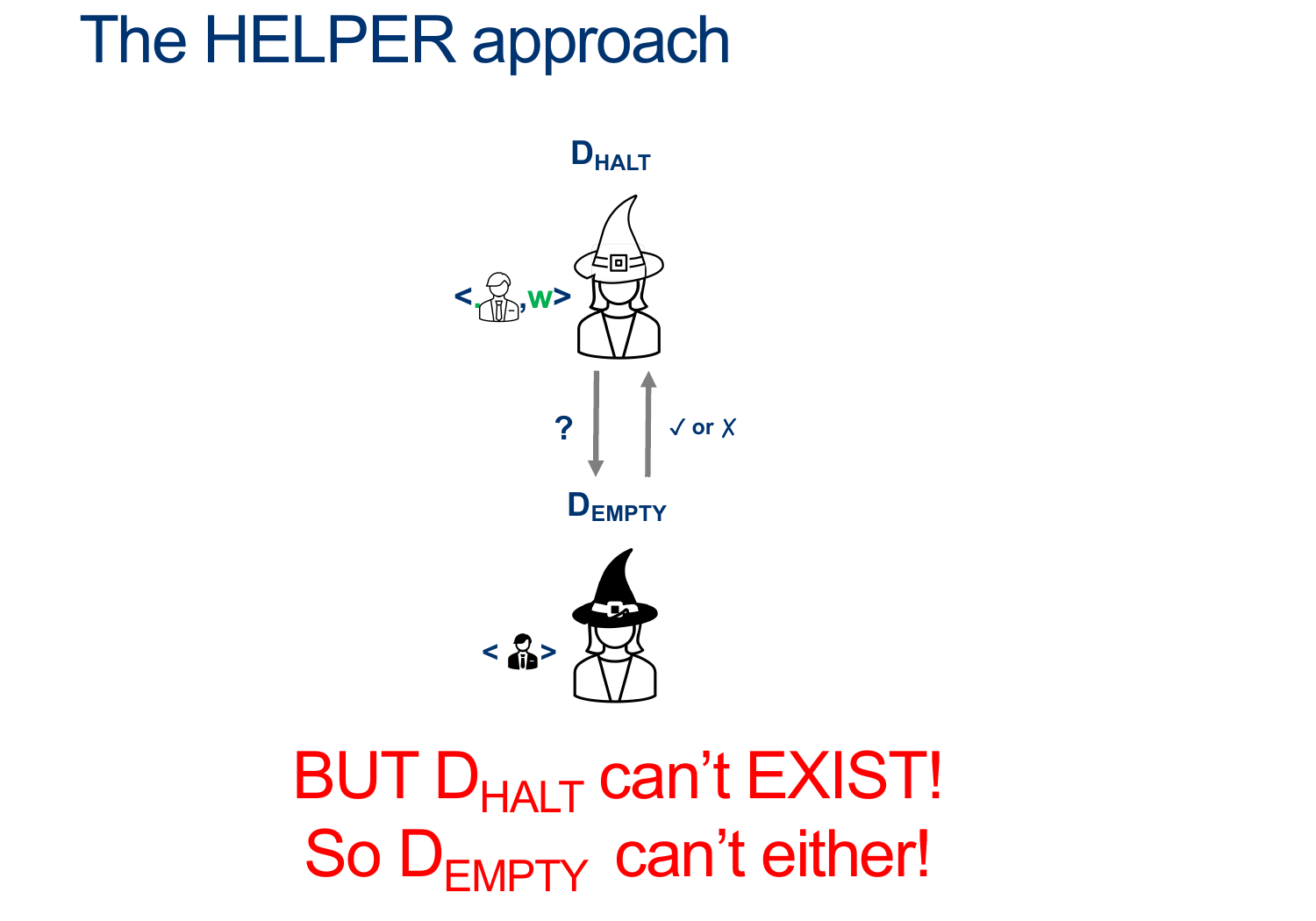
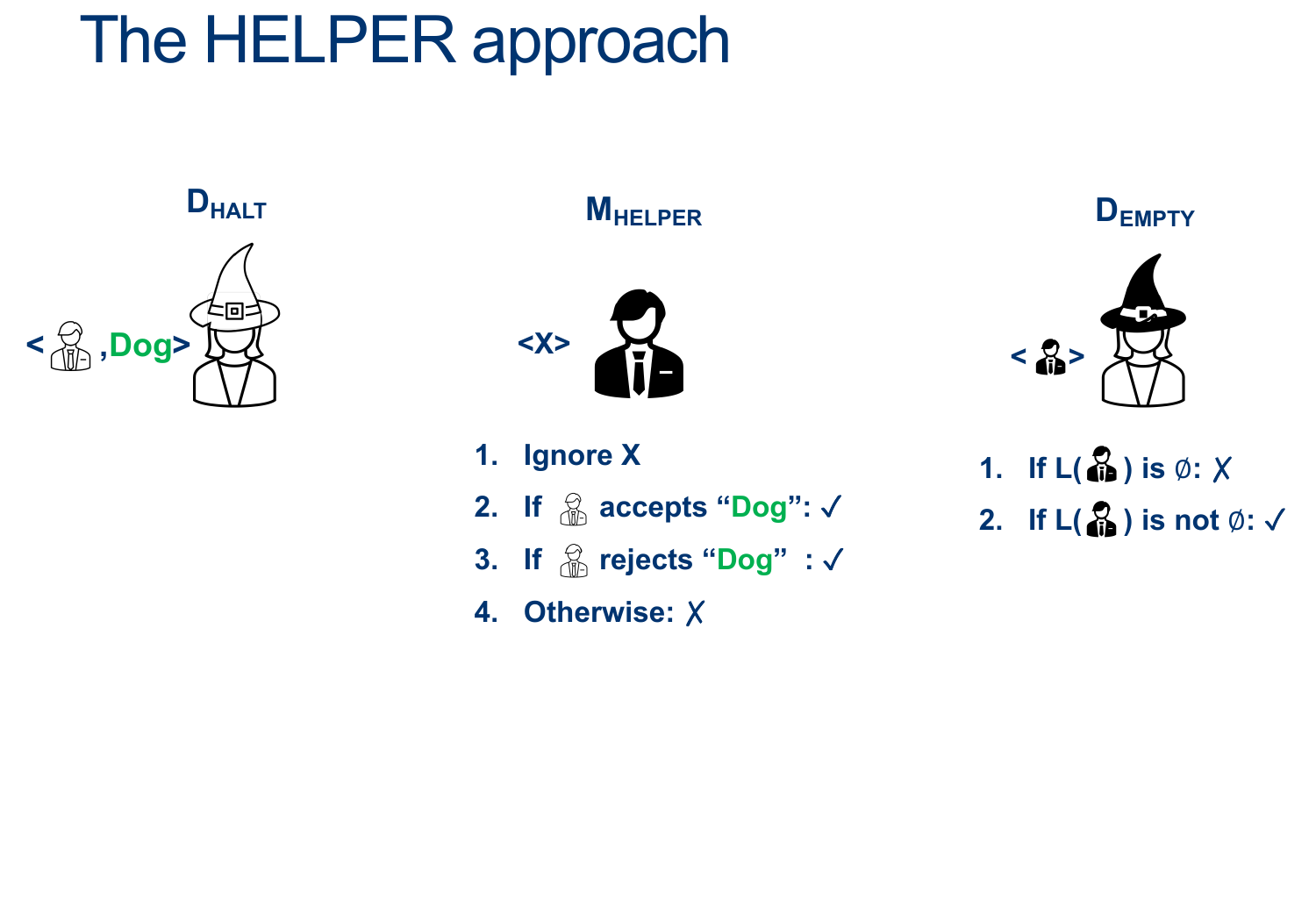

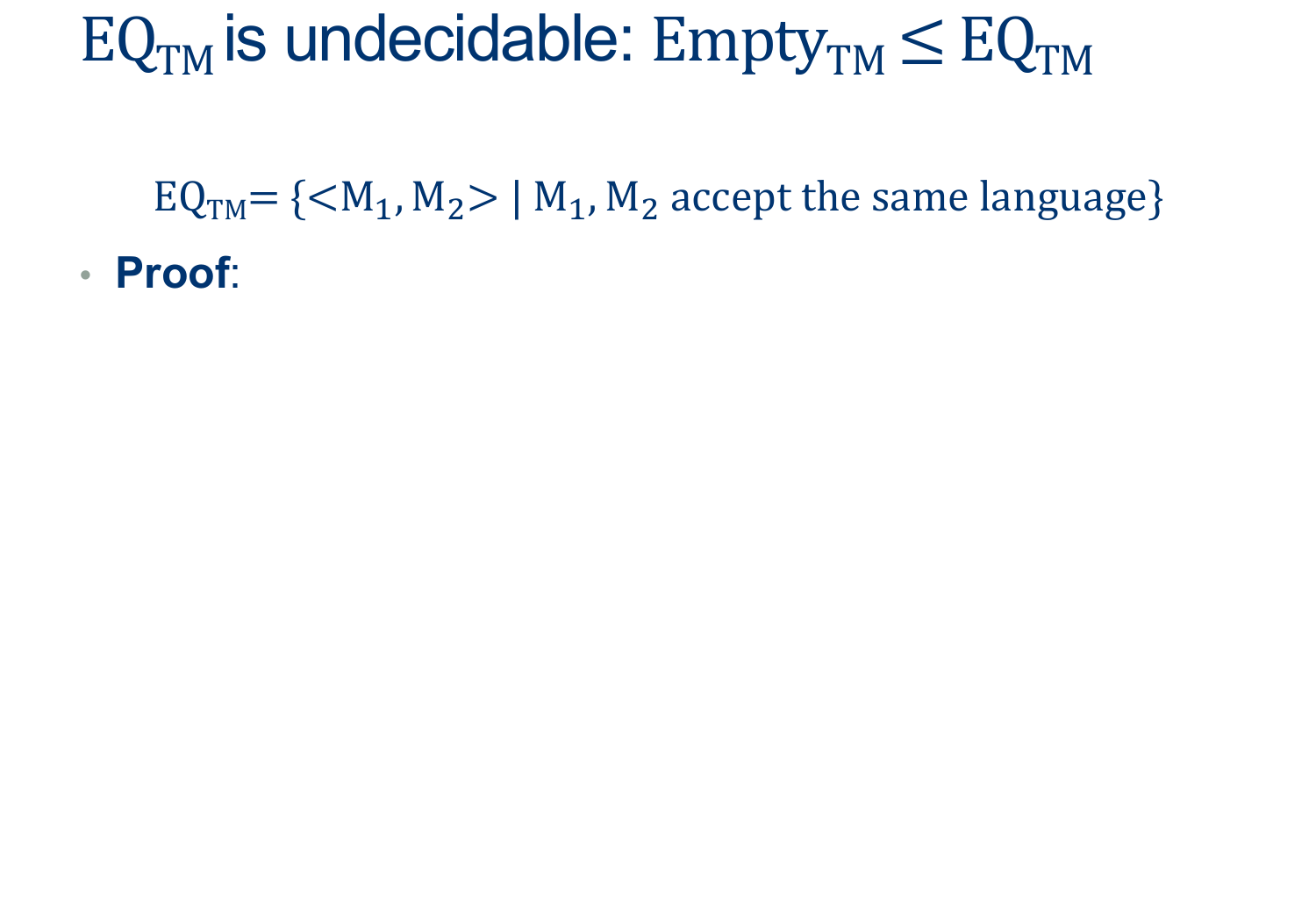
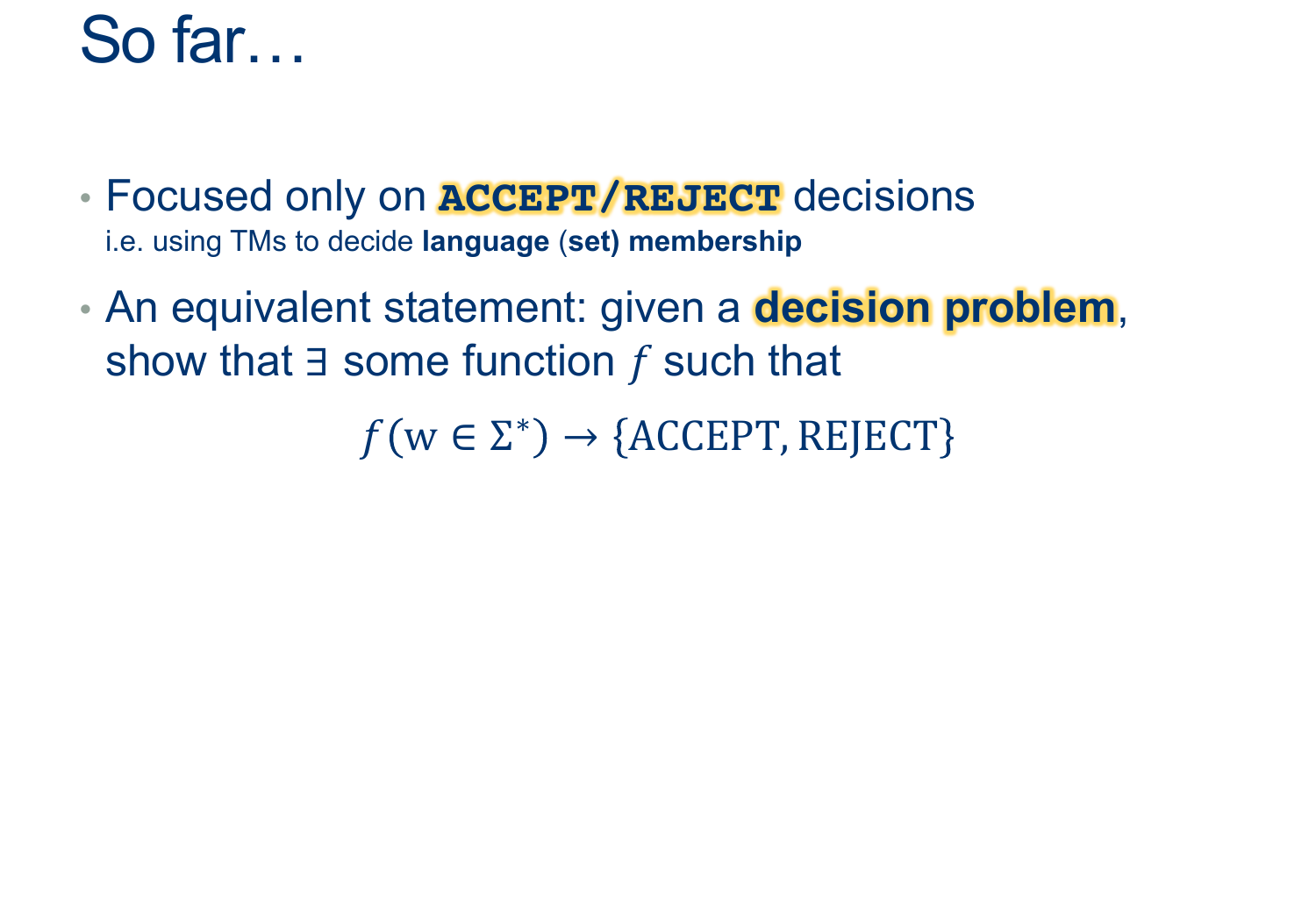
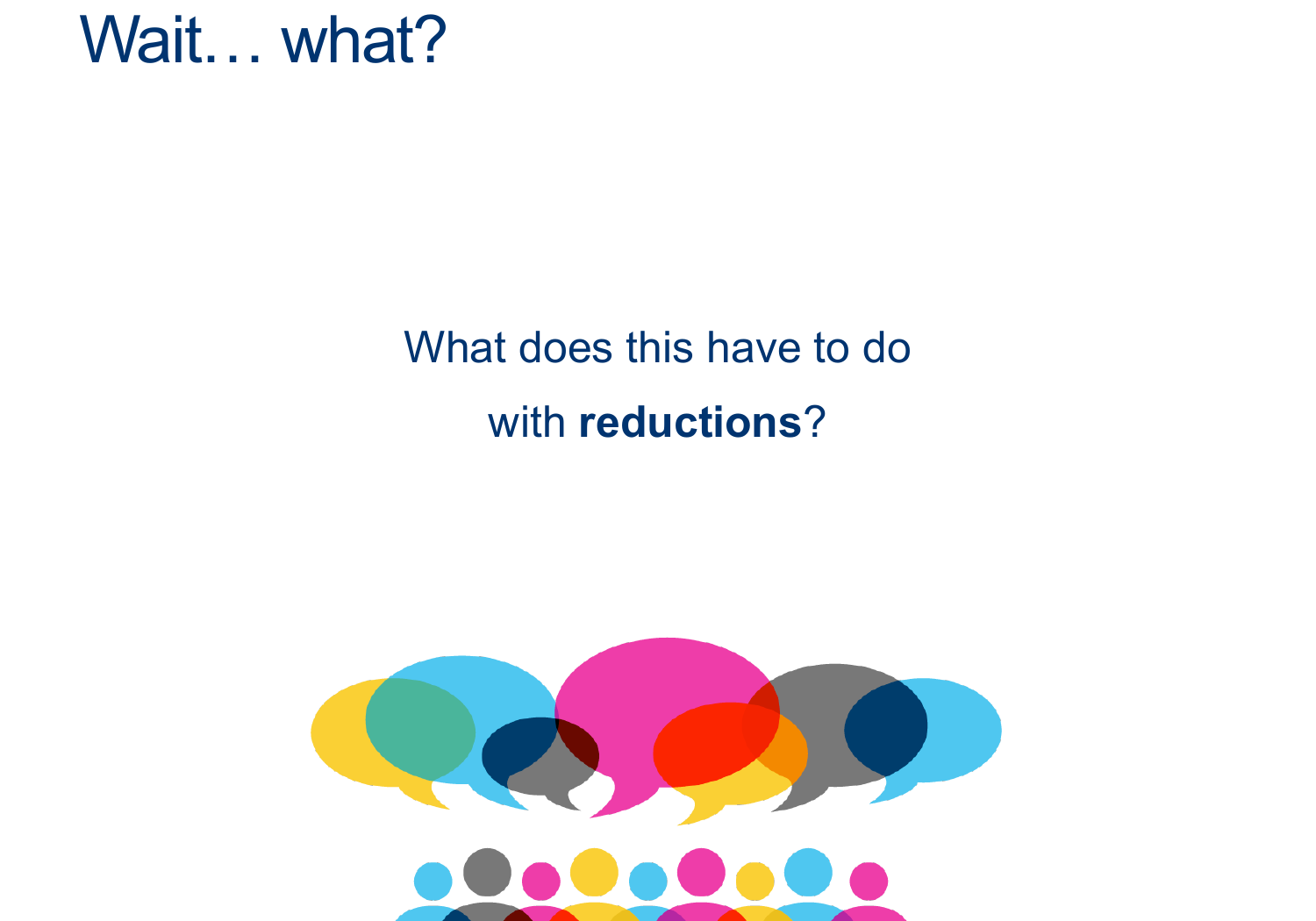
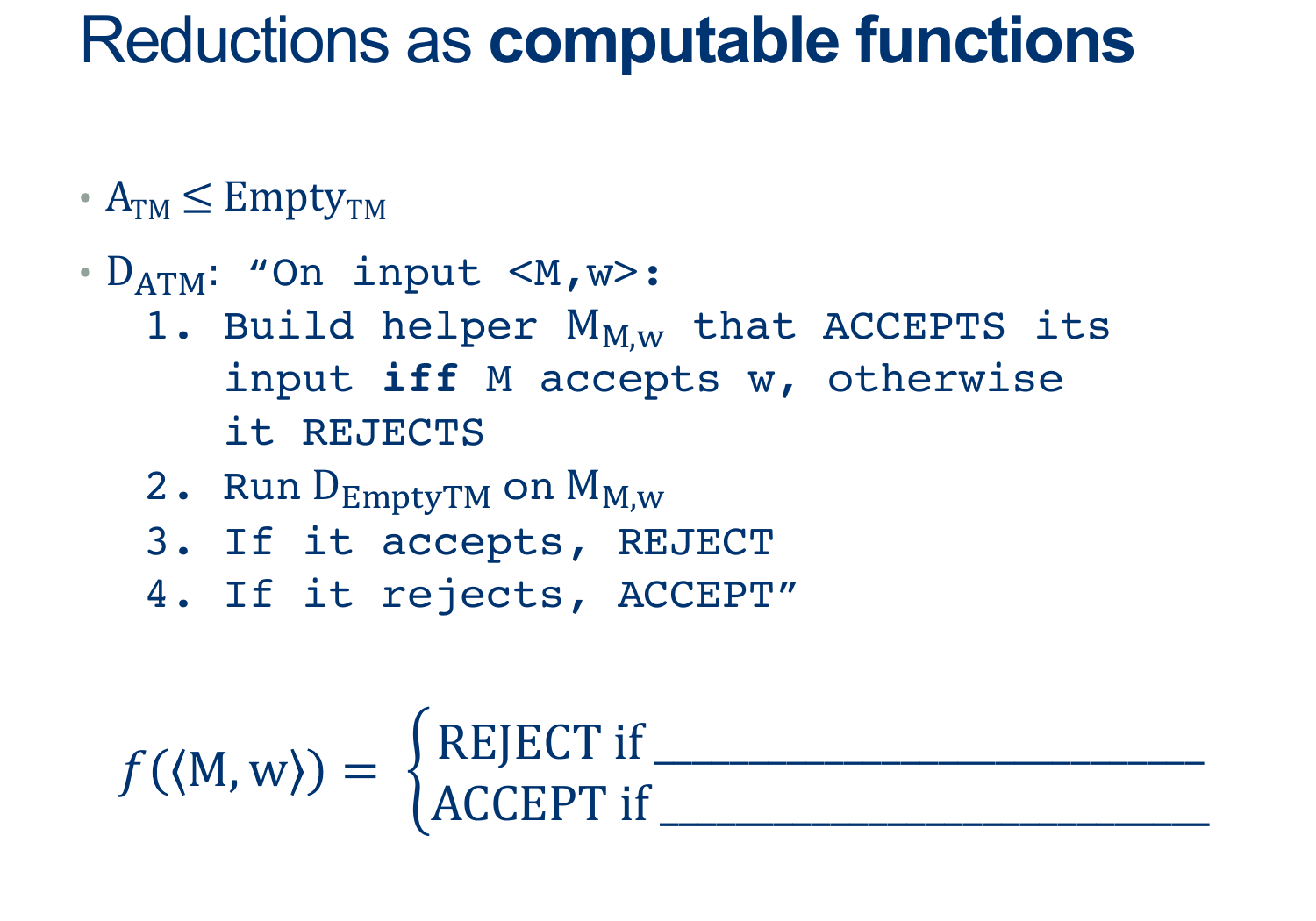
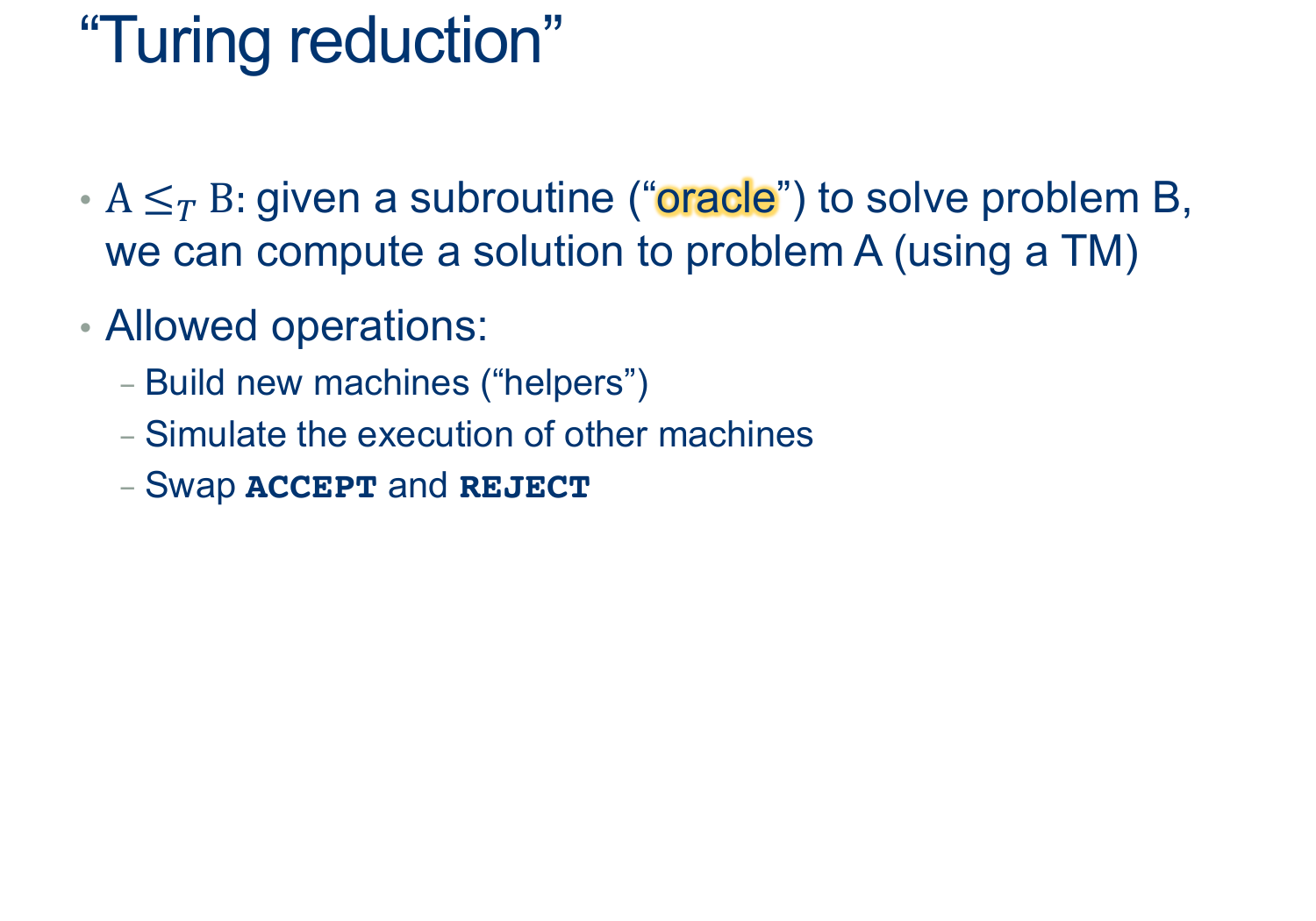

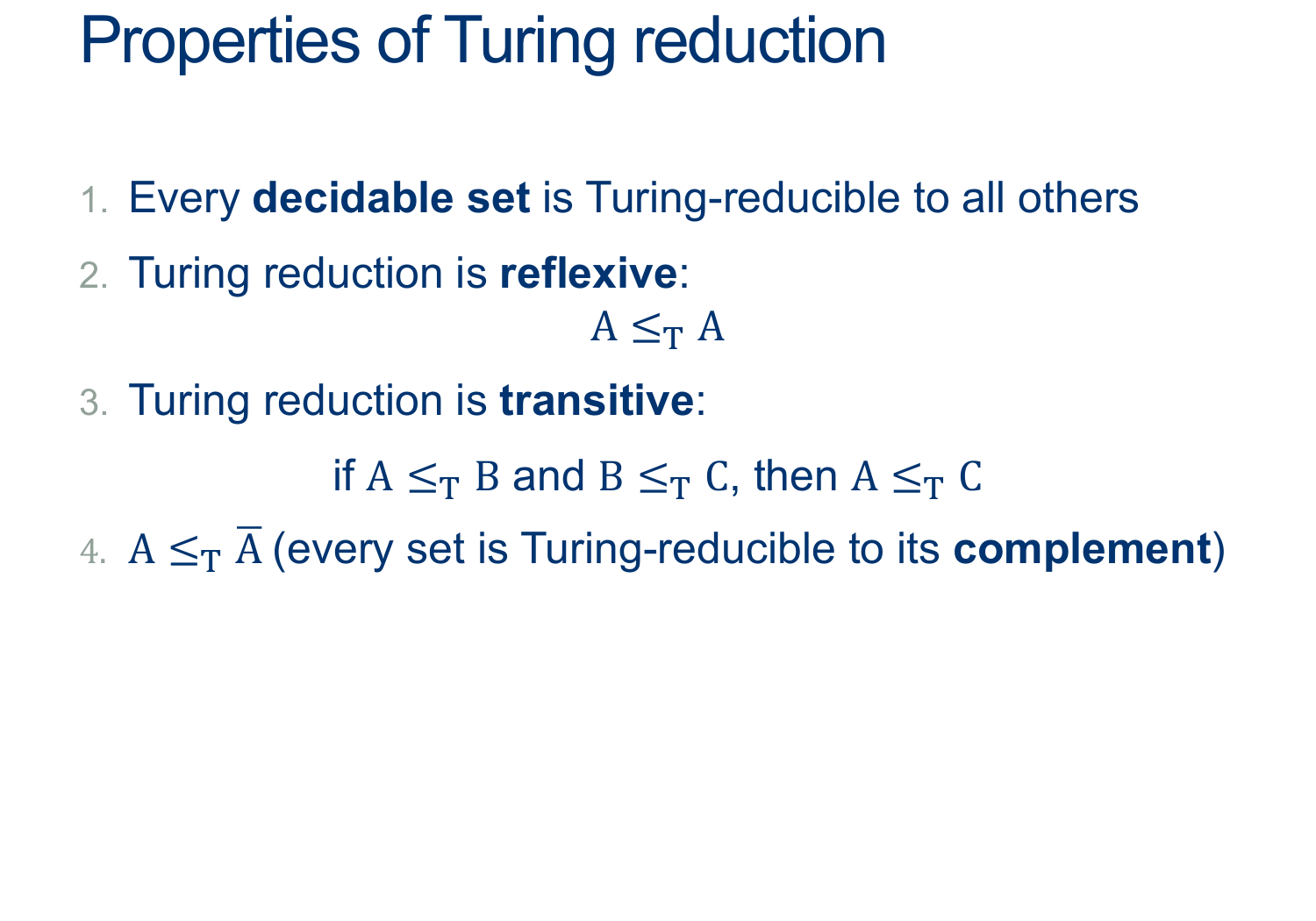

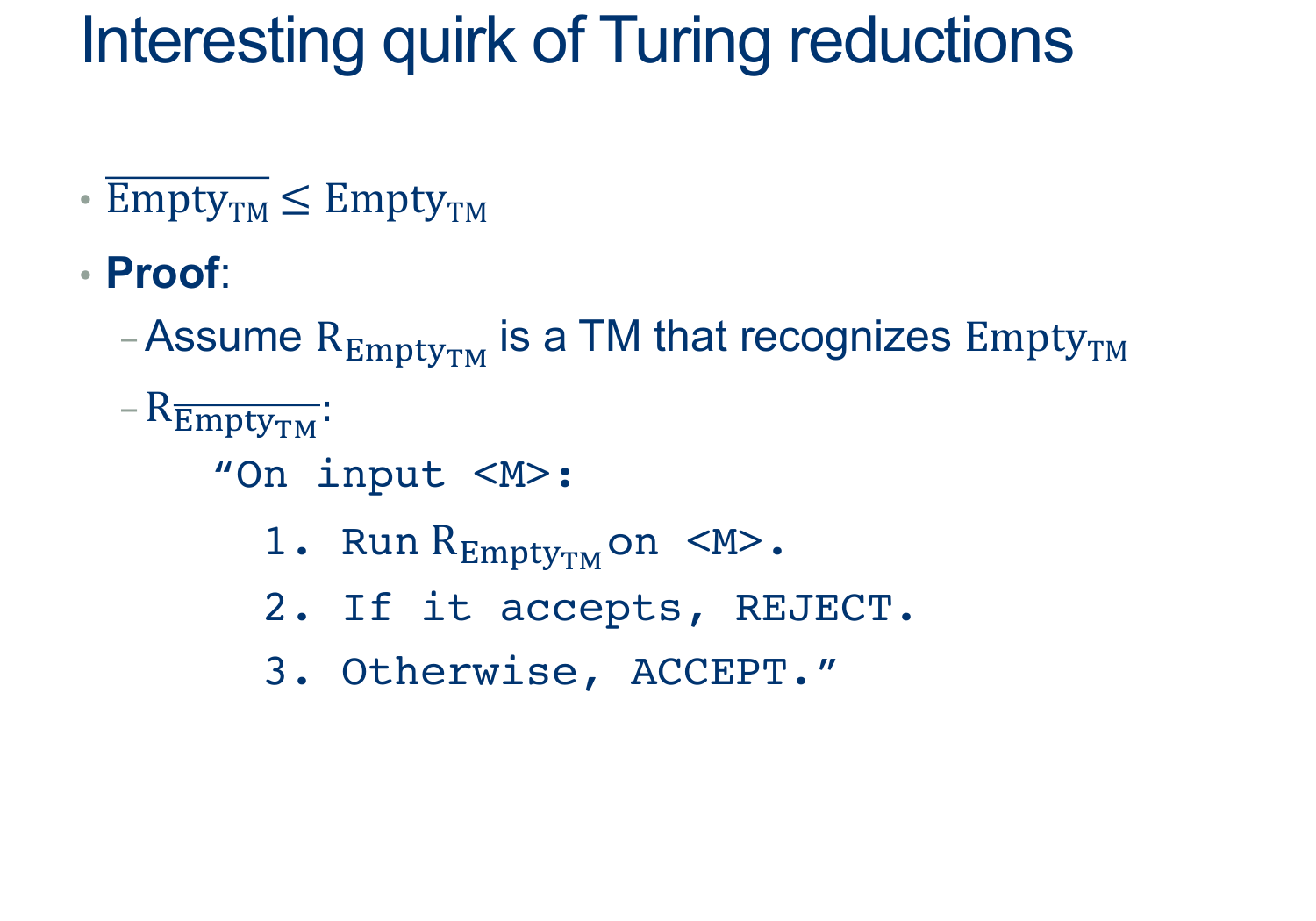
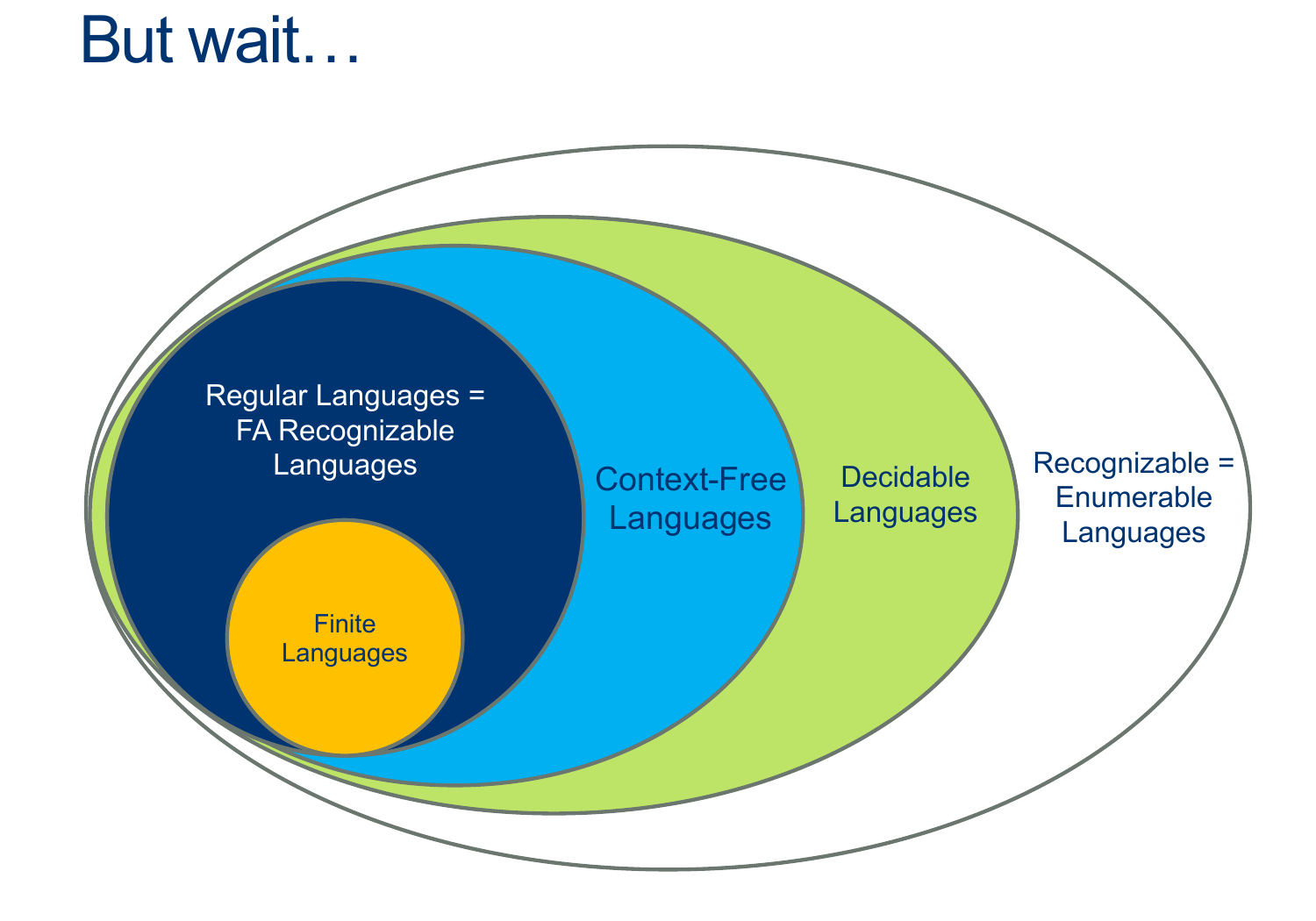
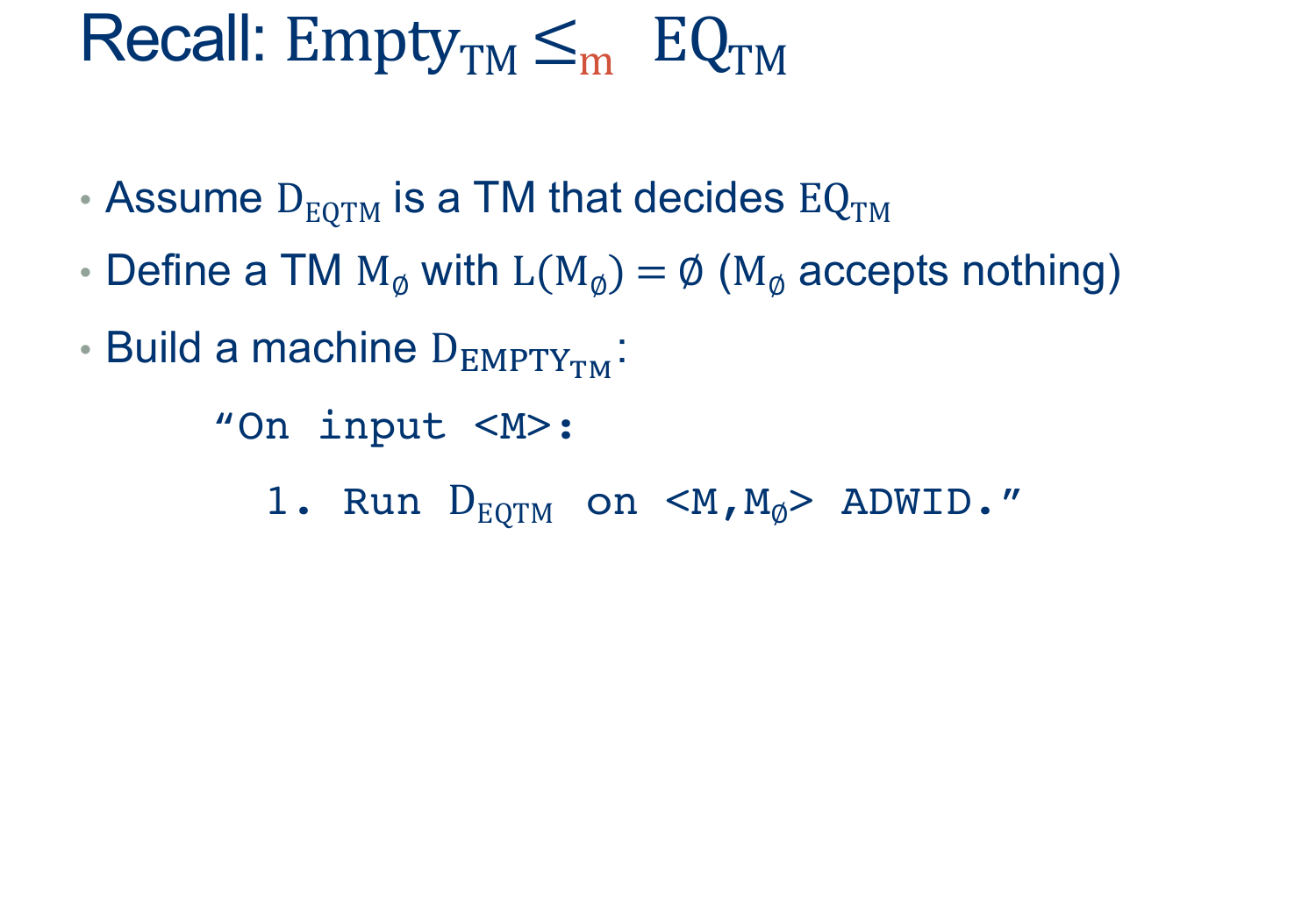
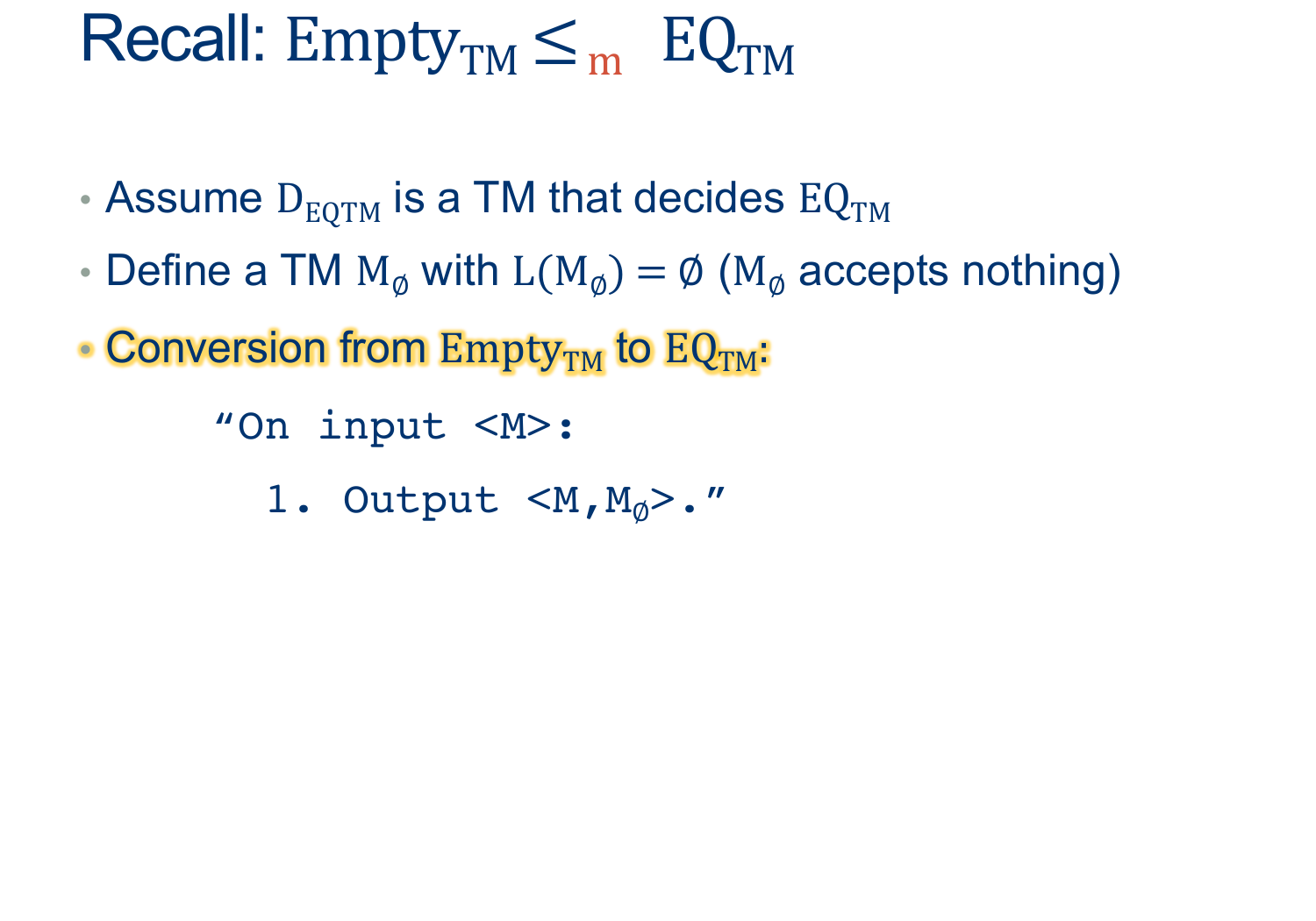
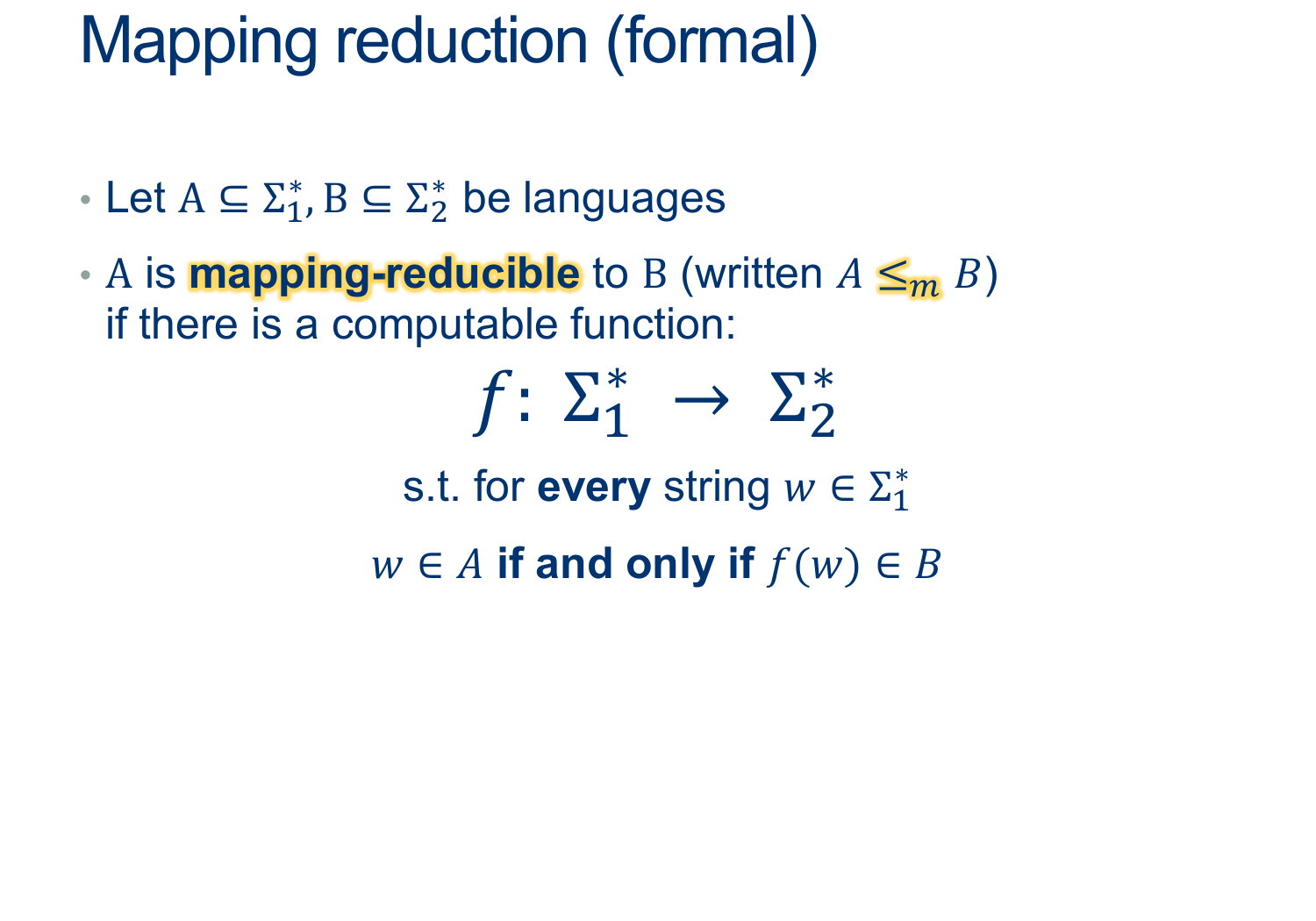
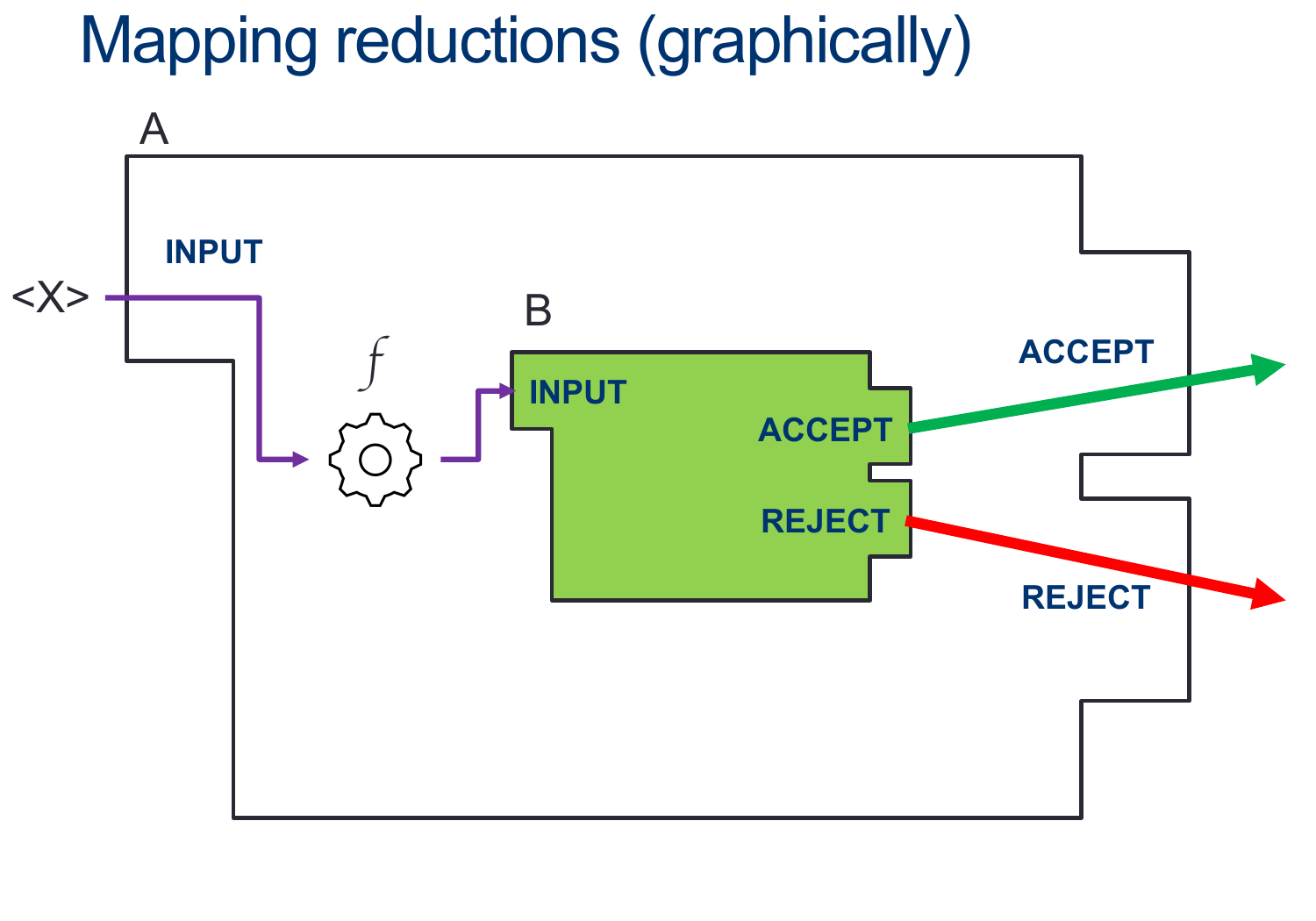
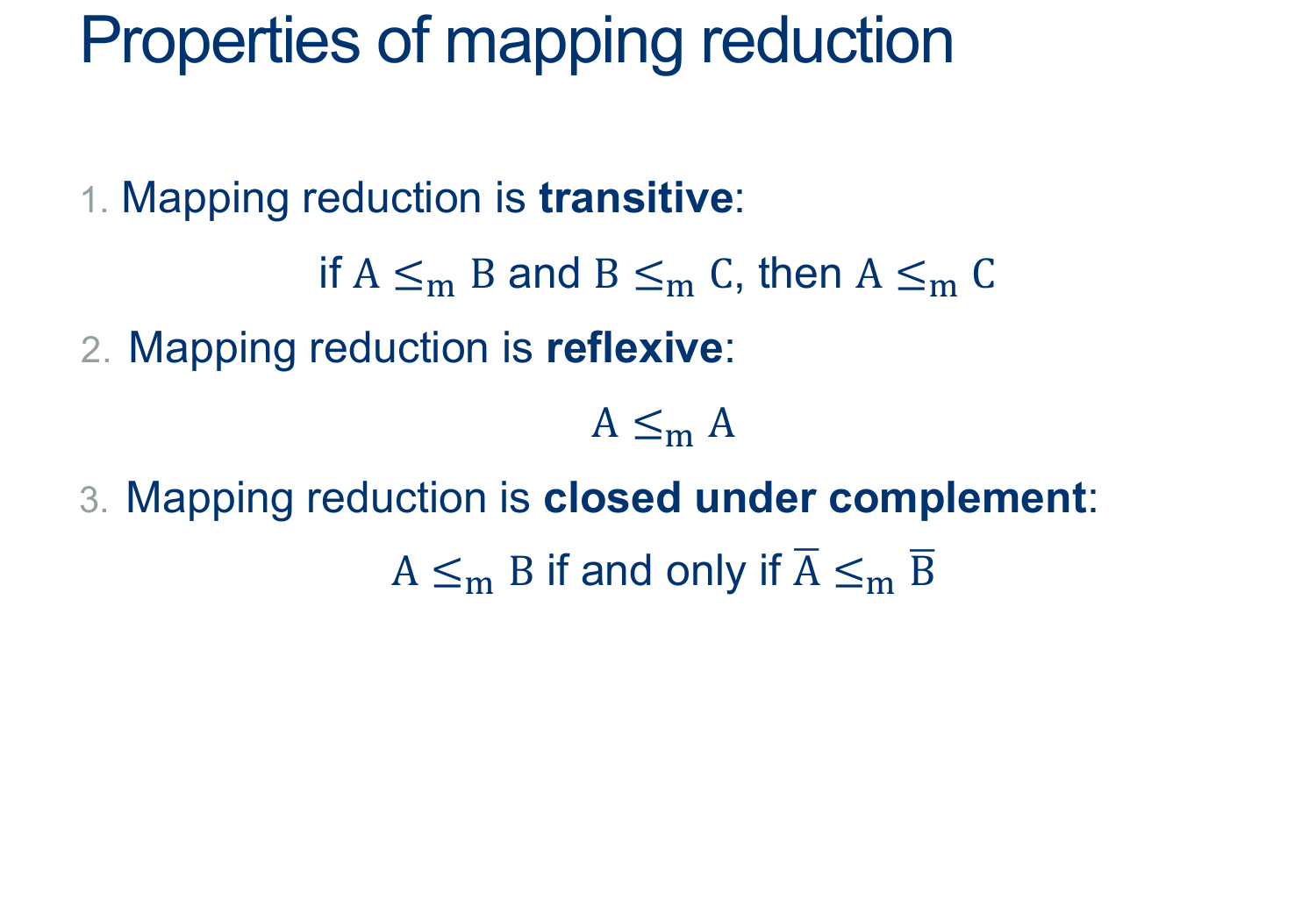
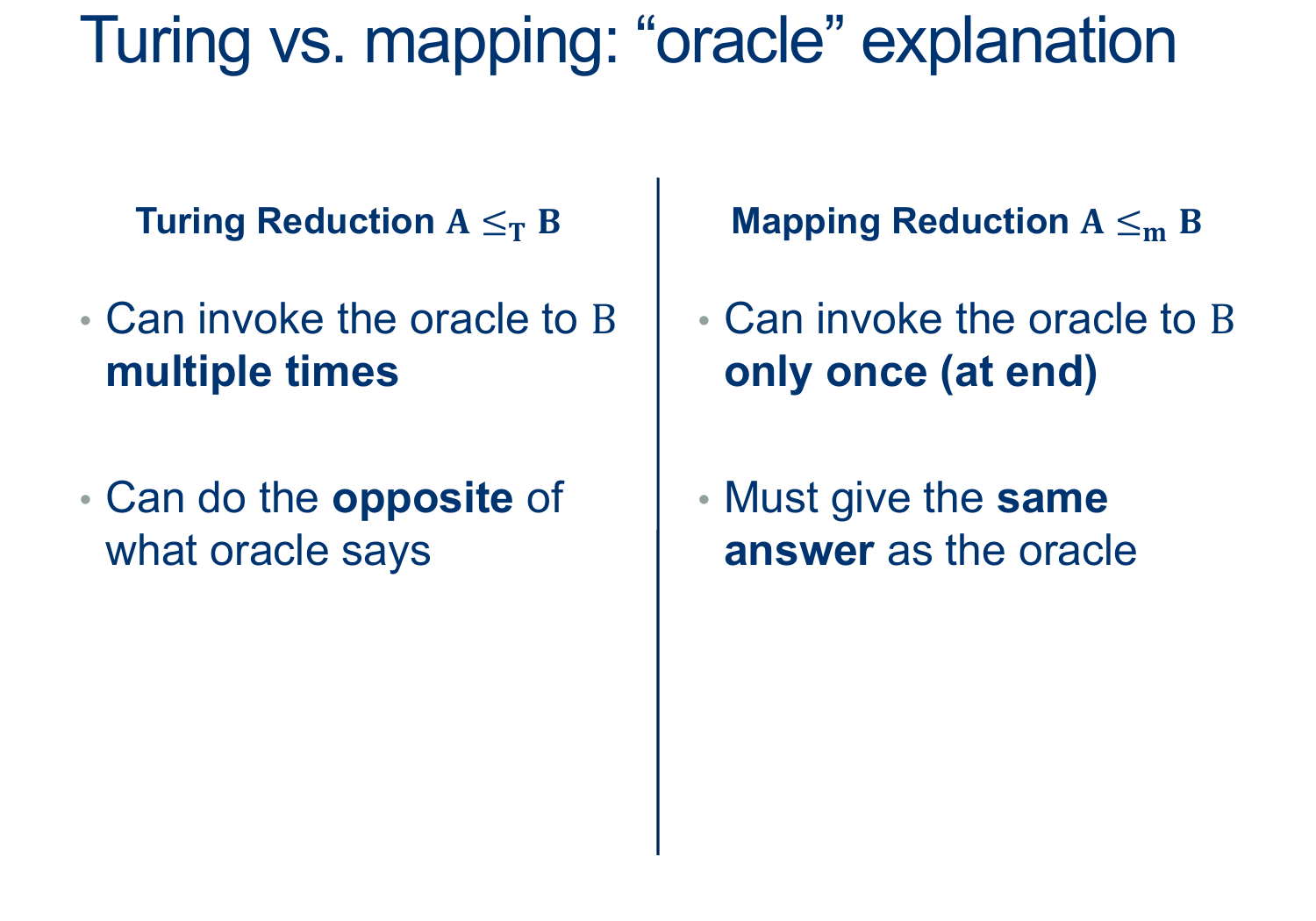
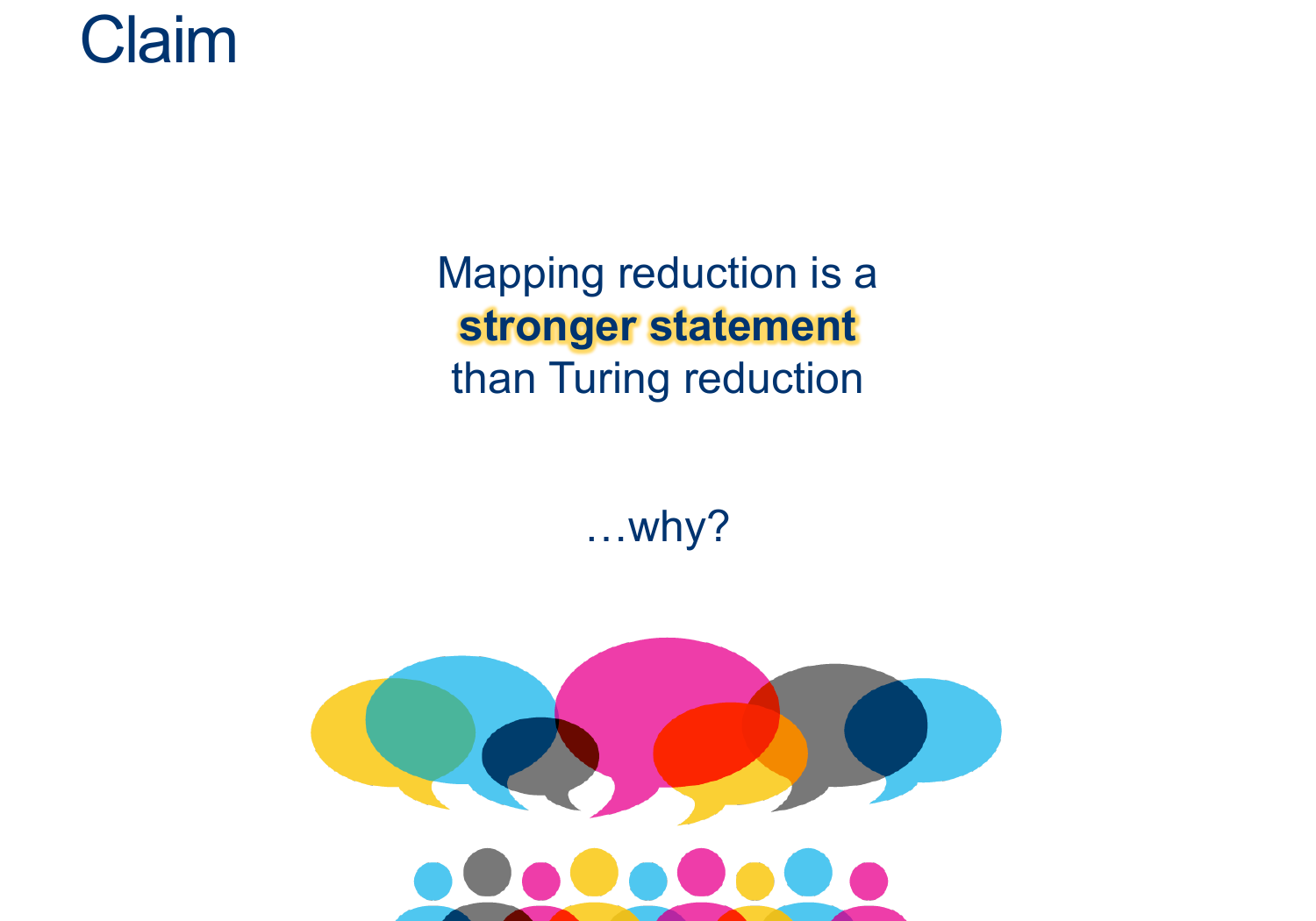

They’re a way for us to relate problems to one another
If A reduces to B and B is easy => A is easy too
More common: if A reduces to be and A is hard => B is hard too
We started with ATM (which we proved was undecidable using a big ugly contradiction )
Reduced ATM to HALT (ATM ≤ HALT): we showed that if we had a decider HALT, we could use that to decide ATM (so that means HALT must also be undecidable)
We did the same thing with ATM-01
And EmptyTM
Later, we also showed that if we had a decider for HALT, we could use that to decide EmptyTM
And that if we had a decider for EQ_TM, we could yet again decide EmptyTM (mapping)

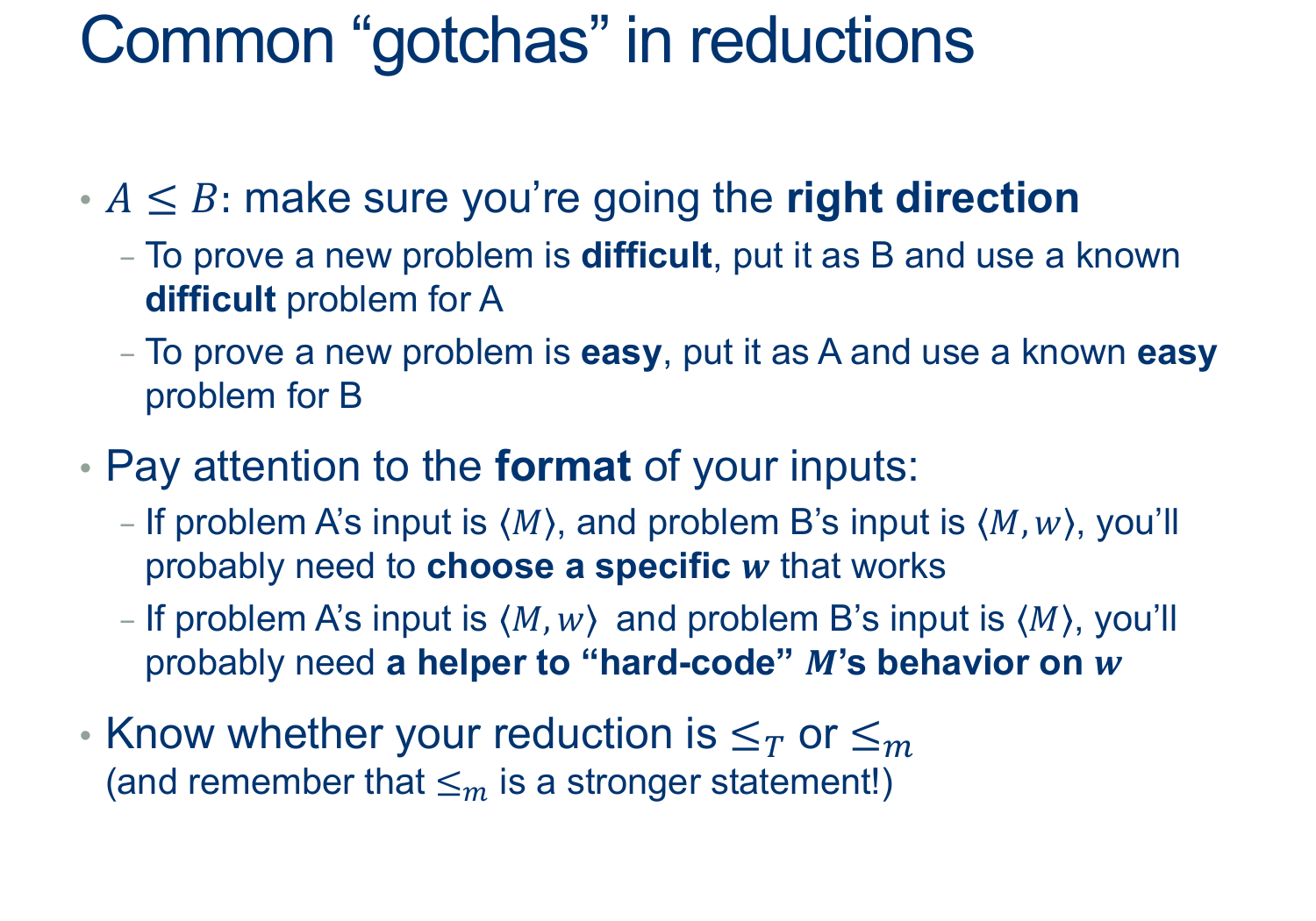
Next: Rice's Theorem